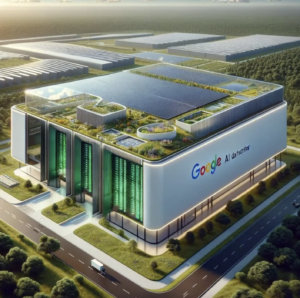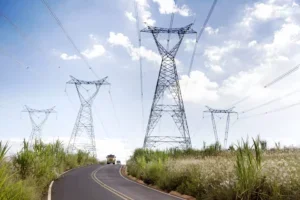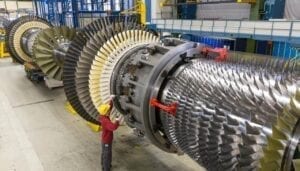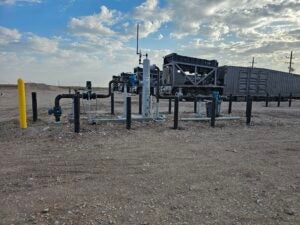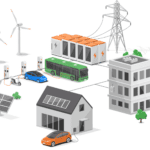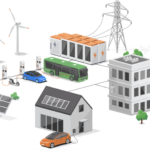Siemens Infrastructure & Cities and Munich city utility Stadtwerke München (SWM) this April put into operation a virtual power plant (VPP), linking several small-scale distributed energy sources and pooling their resources so they can be operated as a single installation (Figure 1). The project comes on the heels of a February 2012 expansion of a pilot project that Siemens began in October 2008 for German utility RWE Deutschland AG. These projects, though not unique, mark a growing VPP trend and increasing interest in the possibility of more centralized direct marketing of electricity from an number of interconnected small energy sources.
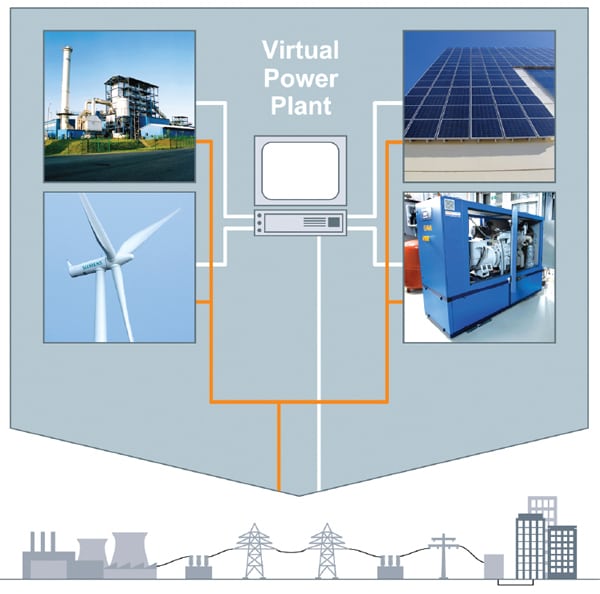 |
| 1. E pluribus unum. Siemens put two virtual power plants into operation in Germany this spring. Virtual power plants are networks of several small power plants that are run as a single system. Courtesy: Siemens Energy |
In the first stage of the SWM project, six cogenerating modules (Figure 2) with a total rating of 8 MW were integrated with 12 MW of renewable sources, including five hydropower plants and a wind farm near Munich. The RWE project so far links 20 MW of RWE-owned and customer-owned generating capacity, but it is slated to grow 10-fold over the next three years, merging 200 MW of biomass and biogas block heating plants, wind turbines, and hydropower plants scattered throughout Germany by 2015.
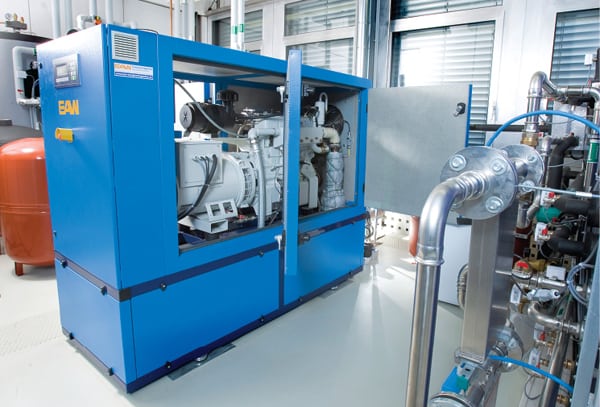 |
| 2. Virtually connected. New virtual power plants recently put online by Siemens and German utilities interconnect modules like this combined heat and power plant at a Siemens test facility with other distributed energy sources and operate them as a single system. Courtesy: Siemens Energy |
Both projects use Siemens’ proprietary Distributed Energy Management System (DEMS), a sophisticated information and communication technology that processes weather forecasts, current electricity prices, and energy demand. “Based on these data, a deployment schedule for all included plants is drawn up and monitored,” Siemens explains. “For example, thermal loads are predicted depending on weather forecasts and day type in hourly time resolution.”
DEMS also reportedly bases the anticipated level of generation on individual plant characteristics and calculates a deployment schedule that minimizes generation and operation costs in the interconnected plants. “In the context of real-time optimization and on the basis of the deployment schedule, deviations from plan that occur in the course of system management are allocated to generation, storage and controllable loads, so that overall planned targets can be met,” the company adds.
The software-based DEMS is connected to the process via the Siemens Simatic WinCC HMI, using standardized TCP-IP data interfaces for the exchange of information between the DEMS and the components involved. Communication between the interconnected energy sources occurs via LAN or WAN, GPRS, bus systems, or ISDN lines.
Siemens’ projects take the efforts of many energy trading companies, which have been aggregating small-sized power plants for years, one step further. However, experts say it has only been a decade or so since the first VPPs came online, mainly as research projects. One reason is that the VPP is still a fluid concept—there is no unique definitional framework for a VPP. It is sometimes compared to an autonomous microgrid or defined as an aggregation of different types of distributed resources dispersed at different points on a medium-voltage distribution network.
Demonstration VPPs include two projects in Europe, the 2005-initiated EUVPP, which aggregates 29 decentralized fuel cell combined heat and power units, and the larger-scale FENIX project. The Danish Edison VPP demonstration specializes in electric vehicle integration.
Despite the concept’s newness, according to Siemens, over the past decade, VPPs have evolved to become a commercially viable alternative to adding new capacity. VPPs “open up new possibilities for energy suppliers and operators of energy generation systems.” Besides offering energy suppliers a new way of selling electricity, VPPs can make utilities more flexible, improve grid stability by making power available in the minute reserve range, and facilitate the integration of renewable energy, the company says.
“Our initial positive experience is encouraging us to expand the virtual power plant by including further energy sources and switched loads,” says Stephan Schwarz, SWM director for utilities and technology. “In the long term this will create prospects for counteracting the supply problems that arise when more of the in-feed comes from renewable energy sources. That is precisely what a Smart Grid is all about.”
Germany, in particular, is poised for an “energy revolution” that will benefit from the growing importance of VPPs in smart grids, Siemens says. One reason is that Germany’s Renewable Energy Act, amended this January, coupled with the country’s market subsidy system, encourages operators to sell electricity from their VPPs directly on the energy markets.
But interest in VPPs is also “gaining significant momentum” around the world, market research firm Pike Research suggests in a recent report. “The increasing variability of both generation (from solar and wind) and loads [due to demand response and plug-in electric vehicles] will… require more sophisticated and decentralized decision making,” it says. The U.S. firm estimates that VPP capacity will increase by 65% between 2011 and 2017, rising from 55.6 GW to 91.7 GW worldwide.
Pike Research Senior Analyst Peter Asmus, who describes VPPs as the “Internet of Energy” says that VPPs are becoming particularly attractive because they can stretch supplies from existing generators and utility demand reduction programs, without requiring any large-scale infrastructure upgrades—an approach that enables utilities and grid operators to react quickly to changing customer load conditions and deliver tangible value in real time.
Unlike some other frameworks for managing distributed energy resources, such as microgrids, Asmus says that utilities will play a major role in the evolution of the VPP market because it is closely intertwined with transmission and distribution infrastructure as well as customer information systems. The consensus seems to be that although no technical hurdles impede the aggregating of tens of distributed energy resources with a centralized control scheme, when the number of VPP participants becomes dramatically large, issues concerning grid instability and unpredictability may arise.
—Sonal Patel is POWER’s senior writer.


